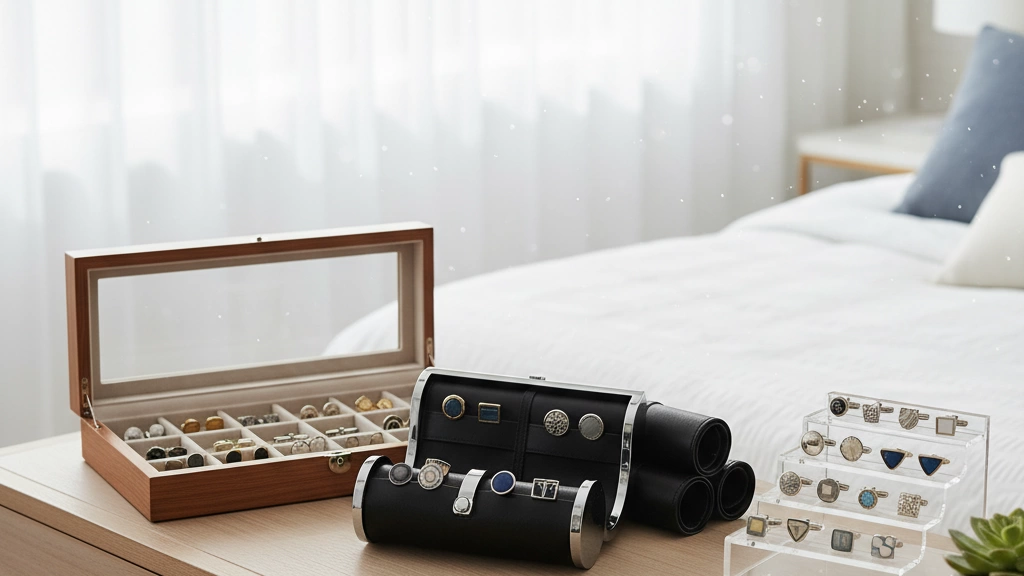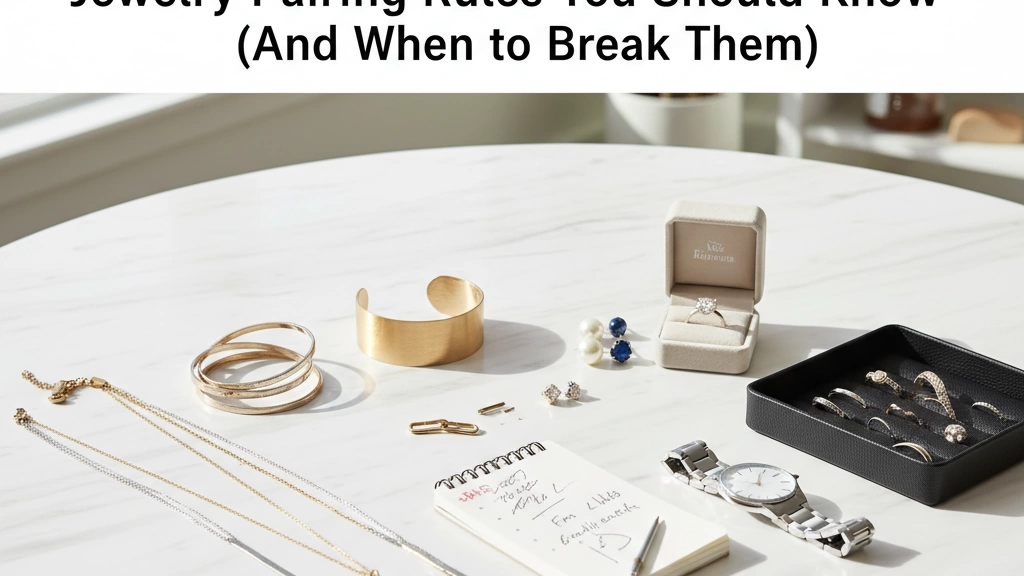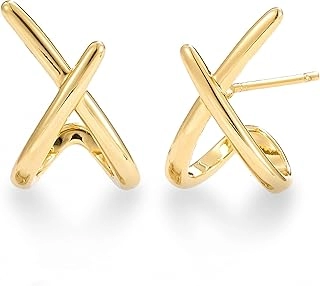You’ve invested in cufflinks — whether it’s a sleek silver pair for the office or a cherished heirloom from a special occasion. But here’s a startling fact: the average man loses one to two pairs every year due to poor storage. The right way to store your cufflinks isn’t just about tidiness; it’s how you prevent scratches, tarnishing, and losing those tiny companions forever. In this post, you’ll discover practical, expert tips that keep your collection safe, organized, and looking sharp for years to come. Let’s get started.
Understanding the Enemy – Common Cufflink Damage and How Storage Prevents It
Before you pick out a cufflink storage solution, it’s essential to understand what you’re actually protecting your collection from. Cufflinks, though small, are surprisingly vulnerable to a host of common problems. Knowing these pitfalls will help you store them the right way—and save you from heartbreak (and expense) down the line.
Oxidation & Tarnish
Silver and gold-plated cufflinks are notorious for tarnishing, a chemical reaction with air and moisture that leaves unsightly dullness or greenish spots. Without proper storage—think anti-tarnish cloths or sealed compartments—your prized pieces will age prematurely and lose their shine.
Scratches and Dents
Metal-on-metal contact or careless tossing into a drawer invites scratches and dents. These marks might be tiny but can significantly degrade the elegance of your cufflinks. Properly designed boxes with individual slots or padded trays keep your pieces snug and scratch-free.
Loss of Backs or Small Decorative Stones
One of cufflinks’ sneaky vulnerabilities is losing tiny components—like the backs or small decorative stones. Without secure storage that holds pairs together and restricts movement, you risk misplacing these parts, leaving your cufflinks practically useless.
Fabric Stains from Improper Contact
Resting cufflinks directly on shirt fabric or other materials without separation can lead to stains—especially if cufflinks have tarnishing metals or residues. Good storage solutions avoid direct contact with delicate fabrics, preserving both your accessories and your shirts.
By recognising these common threats, you’re already halfway to choosing the best cufflink storage ideas. Prevention is less about bubble wrap and more about thoughtful organisation and gentle protection.
Core Principles of Proper Cufflink Storage
Storing your cufflinks the right way starts with a few simple but essential rules:
- Keep pairs together: Always store cufflinks as pairs to avoid losing one and to save time when getting dressed.
- Prevent metal-on-metal contact: Metal rubbing against metal causes scratches and dents, so use compartments or soft lining to keep pieces separated.
- Control humidity and light exposure: Excess moisture and direct sunlight can cause tarnish and fading, especially for silver and gold-plated cufflinks. Store them in a dry, shaded space.
- Easy access and visibility: Choose storage that lets you see your collection clearly. This helps avoid unnecessary handling and keeps your cufflinks organized.
- Separate everyday vs. heirloom/luxury pieces: Regularly worn cufflinks need easy access, while precious or vintage pairs deserve extra protection in dedicated storage to preserve their condition.
Adopting these core storage habits ensures your cufflinks stay in great shape and ready for any occasion. For more tips on accessorizing and cufflink styles, check out this guide on what cufflinks say about your style.
Best Long-Term Home Storage Solutions

When it comes to storing cufflinks long-term, choosing the right home storage is key to keeping them safe and looking sharp. Here are some of the best options to consider:
-
Dedicated cufflink boxes with individual slots: These usually come in leather, wood, or velvet-lined designs, giving each pair its own space to prevent scratches and tangling. They’re perfect for everyday and luxury cufflinks alike.
-
Jewelry trays and drawer inserts: Great for keeping your collection visible and organized inside a dresser or closet drawer. Look for inserts with separate compartments so pairs don’t mix.
-
Watch boxes with cufflink compartments: If you already use a watch box, many models include dedicated sections for cufflinks, making for a compact all-in-one storage solution.
-
High-end display cases for collectors: For those with sizable or heirloom collections, display cases with glass tops and velvet cushions provide protection while showing off your pieces elegantly.
-
Budget and DIY options: If you’re on a budget, repurposed ice cube trays, pill organizers, and magnetic strips can work surprisingly well as cufflink holders. Just make sure they prevent metal-on-metal contact to avoid damage.
Using any of these storage ideas not only keeps your cufflinks safe but also helps you easily find the right pair when you need it. For tips on maintaining your accessories, check out our guide on how to clean your fashion jewelry and make it last longer.
Travel and On-the-Go Storage (Most Overlooked)
When it comes to cufflink storage, travel solutions are often overlooked but essential, especially for frequent business travelers. Choosing between hard-shell travel cases and soft roll pouches depends on how much protection you need. Hard-shell cases offer sturdy defense against dents and crushing, perfect for air travel, while soft roll pouches are lightweight and pack easily but offer less impact protection.
Magnetic closure cases are gaining popularity because they keep your cufflinks secure and easy to access without fumbling with clasps, but be sure to check if the magnet is safe for your particular cufflink materials.
If you’re staying in hotels, using the hotel safe to store cufflinks overnight is smart to prevent theft. For air travel, consider TSA-friendly options that won’t cause delays during security checks.
For your everyday carry (EDC), compact cufflink organizers or slim cases that fit into your briefcase or carry-on make it easy to rotate your collection and stay sharp on the move. For more travel tips on protecting your accessories, check out this handy guide on traveling with jewelry essentials.
Material-Specific Storage Rules
Different cufflink materials need tailored care to keep them looking their best over time. Here’s how to store them properly:
-
Sterling silver: Silver tarnishes when exposed to air and moisture. Use anti-tarnish cloth bags or pouches and add silica gel packets to absorb humidity. This helps prevent the typical dull, blackened surface that ruins sterling silver’s shine.
-
Gold & platinum: These metals are less prone to tarnish, but they can still scratch easily. Store gold and platinum cufflinks in soft, separate compartments or velvet-lined boxes that avoid metal-on-metal contact. Avoid direct sunlight to prevent any discoloration.
-
Enamel and gemstone cufflinks: These delicate designs need cushioning to avoid chips and cracks. Keep them in padded slots or trays, and avoid heavy stacking. For gemstone care tips, check this detailed guide on the meaning behind different gemstones in jewelry.
-
Silk knot cufflinks: Unlike metal ones, these are more vulnerable to stains and fabric damage. Store them in breathable pouches or separated compartments to keep them clean and maintain their shape. Avoid exposure to moisture or oils.
-
Vintage/antique pairs: Older cufflinks often have fragile settings or patina that adds character. Store them in dedicated cases with soft linings, away from harsh light or humidity. Regular gentle cleaning keeps them looking authentic without damage.
Following these material-specific storage rules helps preserve your cufflink collection’s value and appearance for years to come.
Daily Habits That Save Your Cufflinks
Taking a few simple daily steps can greatly extend the life of your cufflinks and keep them looking sharp.
-
Remove before sleep, gym, or swimming
Sweat, moisture, and rough activity can accelerate wear and tarnish. Always take off your cufflinks before going to bed, exercising, or hitting the pool.
-
Clean before storing
Wipe cufflinks gently with a soft cloth to remove oils, dirt, and sweat. This prevents buildup that leads to dullness and damage over time.
-
Rotate pairs to avoid overuse
Give your favorite cufflinks a break by rotating your collection regularly. This reduces the risk of scratches, weakening, or uneven wear.
-
Annual inspection routine
Once a year, check each pair for loose backs, missing stones, or signs of tarnish. Early detection makes repairs easier and keeps your collection in top shape.
By keeping these habits consistent, your cufflinks stay ready for any occasion and maintain their value — whether everyday pieces or special heirlooms. For more tips on accessory care, check out this helpful guide on elevating your black-tie attire.
Top Recommended Cufflink Storage Products in 2025
Looking for the best cufflink storage options in 2025? Whether you\’re organizing a small collection or managing fifty-plus pairs, here’s a quick rundown of top picks across different budgets—no hard sell, just honest suggestions.
-
Wolf 1834 Cufflink Box
A luxury choice featuring leather exterior and velvet-lined individual slots. Perfect for collectors wanting to protect heirloom and high-end pieces with style and security.
-
Vlando Jewelry Organizer Tray
Great for everyday users, this velvet-lined tray fits inside most drawers and keeps pairs visible and accessible, preventing metal-on-metal contact while saving space.
-
Case Elegance Travel Cufflink Case
Hard-shell, TSA-friendly, and compact—ideal for frequent travelers. Magnetic closure keeps pairs secure without risk of scratches during transport.
-
Jewelry Stackable Drawer Organizer
Modular design with customizable compartments works well for large collections. You can separate everyday cufflinks from luxury or vintage ones easily.
-
Budget Option: Repurposed Ice Cube Trays or Pill Organizers
Simple DIY solutions that keep pairs separated and prevent scratches. Just line the compartments with soft cloth or cotton.
-
Koolertron Magnetic Cufflink Case
A niche pick for magnetic cufflinks, this case prevents loss during travels and offers a minimalist, compact storage option.
For those curious about organizing cufflinks alongside other accessories, combining these storage options with a well-planned wardrobe system can keep everything neat and ready. And if you want to step up your overall accessory game, consider pairing your cufflink storage strategy with tips on folding pocket squares or tying ties perfectly, like outlined in this accessible guide on the 3 simple pocket square folds.
No matter your style or storage needs, these options cover a range of preferences and budgets to keep your cufflink collection in great condition, ready to impress at any occasion.
Quick FAQ About Cufflink Storage
Can I store cufflinks in the original box?
Yes, original boxes can work well if they have individual slots or soft lining. However, many original boxes are designed for gifting and don’t offer the best protection for long-term storage. If you keep them in the original box, make sure pairs are secure and the interior is soft to prevent scratches.
Is it safe to keep them in a sock drawer?
Storing cufflinks loosely in a sock drawer isn’t ideal. Fabric contact can cause stains or leave lint, and metal pieces may scratch each other. If a drawer is your only option, use small pouches or a compartmentalized tray to keep them separate and clean.
How do I stop silver cufflinks from tarnishing?
Silver cufflinks tarnish due to oxidation, but you can slow this by storing them in anti-tarnish cloth bags or boxes with silica gel packets to control moisture. Regular cleaning before storage helps too. For more on preventing tarnish, check out reliable tips in our guide on how to prevent your jewelry from tarnishing.
What’s the best way to store 50+ pairs?
For large collections, dedicated cufflink boxes with individual slots or drawer inserts designed specifically for cufflinks are the way to go. These keep your collection organized, visible, and protected. Display cases or watch boxes with compartments also make great homes for bigger collections, especially if you separate everyday from luxury or vintage pairs.
Are magnetic cases safe for all cufflinks?
Magnetic cases can be a handy travel option, but they’re not ideal for every cufflink type. Use caution with vintage pieces or those with delicate stones and enamel, as magnets could cause damage or dislodge parts. For these, soft pouches or padded cases are safer choices.
Whether you’re after cufflink storage ideas for home or on the go, keeping these basics in mind will help keep your collection in top shape.


